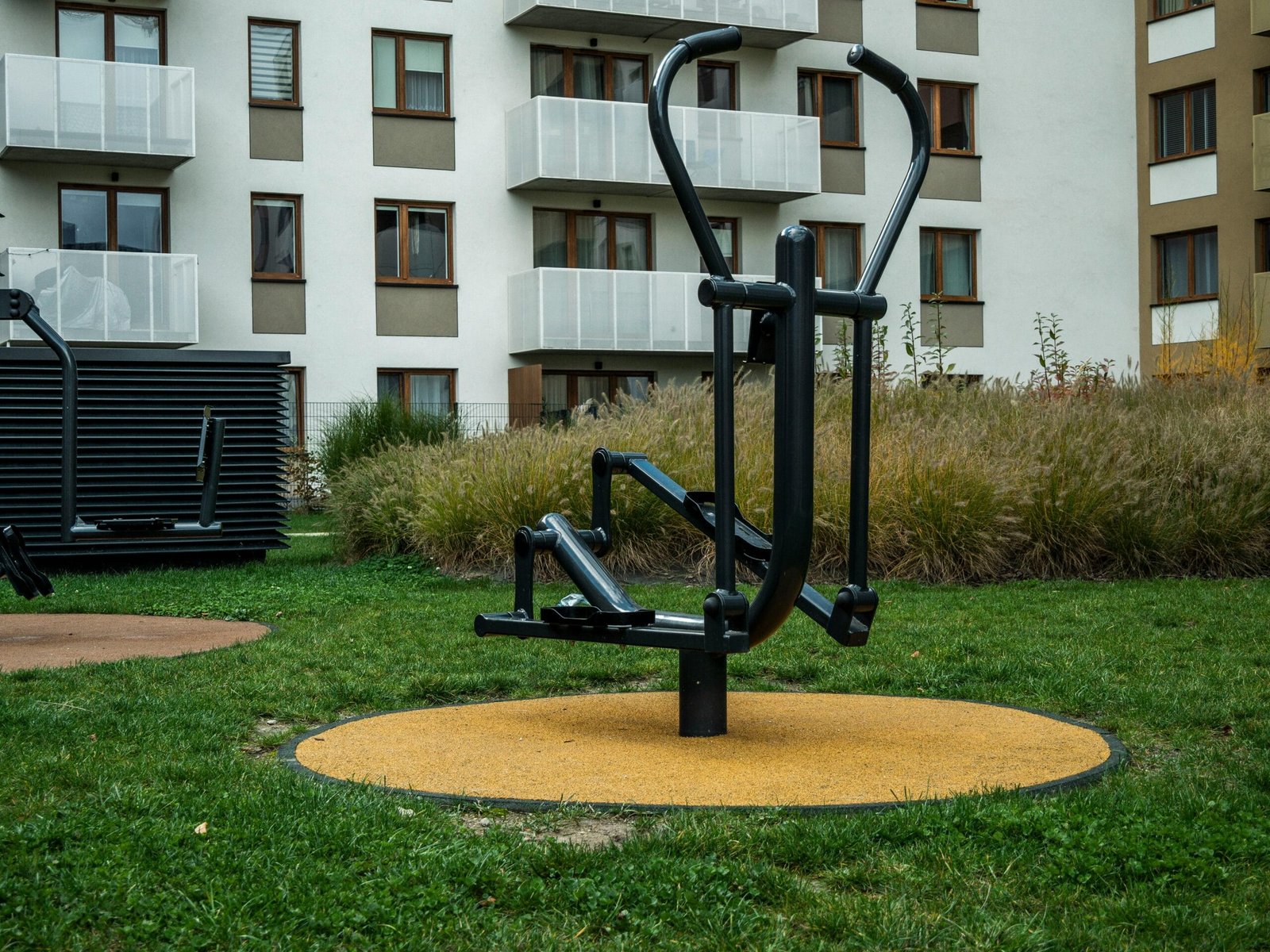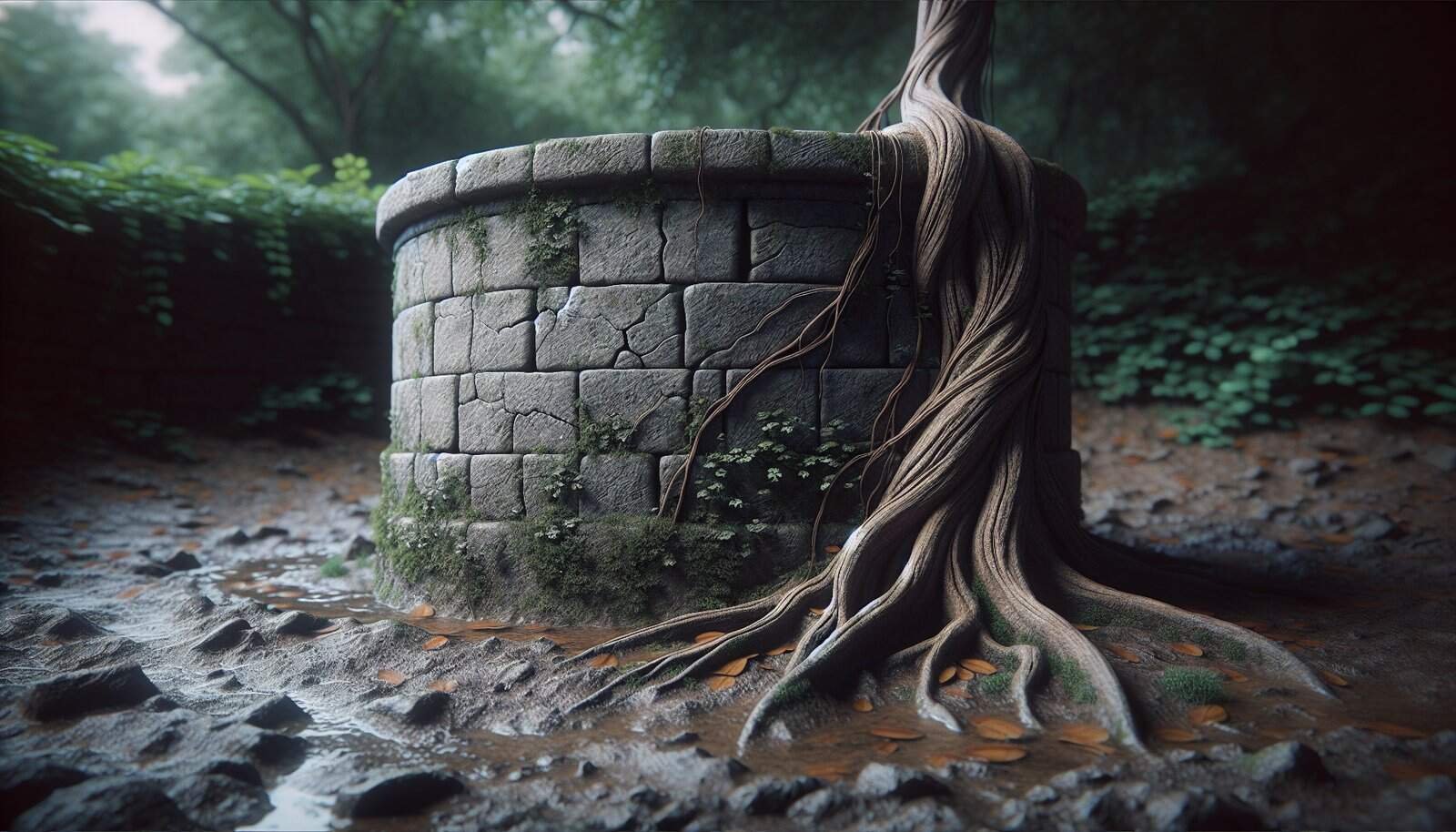?Are tree roots putting the safety of your well at risk?

Can Tree Roots Damage The Safety Of My Well?
You want clear information about whether tree roots can harm your well and how to protect your water supply. This article will walk you through the risks, signs to watch for, preventive steps, and remedial options so you can make informed decisions about your property and water safety.
How tree roots grow and interact with underground structures
Understanding how roots grow will help you anticipate potential problems and take the right preventive steps. Roots are constantly seeking water, oxygen, and nutrients, and their growth patterns determine how they may interact with wells, pipes, and other underground structures.
Root growth basics
Roots extend outward from a tree in search of moisture and nutrients, often spreading well beyond the tree’s dripline. Young, fine feeder roots are the most active in water uptake and are the ones most likely to invade small cracks, seams, and backfilled spaces near wells and pipes.
Types of root systems
Different tree species develop different root architectures: some have deep taproots while others form wide, shallow networks. Knowing the root behavior of trees near your well will help you assess risk and choose suitable mitigation measures.
Root interaction with built structures
Roots respond to moisture gradients and will grow toward consistent water sources like leaky pipes, poorly sealed wells, or saturated soil. They can wedge into small gaps, accelerate cracking through mechanical pressure, and exacerbate existing weaknesses in construction or backfill.
Why wells are vulnerable to root damage
Wells are penetrations into the ground that often involve joints, screens, casing, and seal materials—elements that can be compromised by root activity. Even when roots do not physically damage components, they can create pathways for contamination that undermine water safety.
Components of a well that can be affected
Key parts of a well that can be impacted include the well cap, casing, grout seal, pump, drop pipe, and intake screen. If roots breach the protective seals or clog intake screens, they can affect both the quality and quantity of your water.
How roots cause contamination
When roots enter or press against a poorly sealed well, they can create channels that allow surface water, organic debris, and microbial contaminants to enter the well. Surface water often carries bacteria, nutrients, and sediments that degrade water quality.
How roots cause structural and mechanical damage
Roots exert mechanical pressure as they grow and can deform casings, lift concrete pads, and disturb adjacent piping. They also clog screens and pumps with root fragments and organic matter, which reduces flow and can damage mechanical components over time.
Signs that tree roots may be affecting your well
You should be alert to changes in water characteristics and physical conditions around the well, because early detection helps prevent serious problems. Many signs are subtle at first but become more obvious if roots are allowed to progress unchecked.
Changes in water quality
If your water suddenly becomes cloudy, discolored, or develops a rotten or earthy odor, roots or surface contamination may be involved. An increase in bacterial counts, especially total coliforms or E. coli, is a strong indicator that surface or root pathways may be entering your well.
Changes in water quantity and pressure
Reduced flow, intermittent pumping, or unusual cycling of the pump can indicate that roots are blocking intake screens, restricting flow in the drop pipe, or causing the pump to work against inconsistent pressure. Sudden drops in water level after heavy rain may point to contamination pathways rather than depletion.
Physical evidence near the well
You may notice surface depressions, soggy soil, or new tree shoots and vigorous root suckers around the well pad or access area. Cracked concrete pads, bulging well casings, or visible roots in excavation reveal a physical presence that needs to be assessed.
Checklist: signs and urgency
| Sign observed | What it may indicate | Urgency |
|---|---|---|
| Cloudy or discolored water | Sediment or organic matter intrusion | High |
| Positive coliform/E.coli tests | Surface contamination pathway | High |
| Reduced flow / pump cycling | Intake or pipe blockage | Medium–High |
| Cracked concrete pad or bulging casing | Mechanical/root pressure | Medium |
| Wet soil / surface water pooling near well | Potential pathway for contaminants | Medium–High |
| Exposed roots or root suckers near well | Root presence that may grow further | Low–Medium |

Assessing the risk: factors that affect root impact
Risk assessment depends on multiple variables; no single factor tells the whole story. The combined effect of distance, tree species, soil conditions, well construction, and maintenance history will determine how vulnerable your well is.
Distance from trees to well
As a general rule, the farther a tree is from your well, the lower the immediate risk from roots. However, aggressive-rooted trees can extend well beyond the dripline, so minimum safe distances depend on species and tree size rather than a fixed number alone.
Soil type and moisture conditions
Sandy or well-drained soils let roots expand quickly, while compacted or clay-rich soils restrict root spread but can encourage roots to seek narrow paths like those around pipes. Moist soil conditions from irrigation or leaks will attract roots and accelerate growth toward your well.
Age and health of trees
Young trees grow more aggressively and send out many feeder roots as they establish. Conversely, mature trees with large root systems can cause substantial mechanical force. A dying or stressed tree may send out suckers and change root behavior unpredictably.
Well depth, type, and construction quality
Deeper wells with properly installed, grouted casings and watertight covers are less susceptible to root intrusion than shallow or poorly sealed wells. Wells with compromised grout or missing caps provide easier entry points for roots and surface water.
Preventive measures you can take
You can reduce the risk of root-related problems through careful site planning, vegetation choices, regular maintenance, and physical controls. Prevention is usually less expensive and more effective than later remediation.
Proper siting and initial planning
When siting a new well, place it away from known root zones, drainage pathways, and low-lying vegetated areas. Follow local well separation requirements relative to trees, septic systems, and other potential contamination sources.
Selecting appropriate vegetation
Choose non-invasive shrubs and native groundcovers instead of trees in the immediate vicinity of the well. Small shrubs and perennials with fibrous root systems are less likely to cause structural problems and are easier to manage.
Recommended plants near wells
| Type | Examples | Why they work |
|---|---|---|
| Low-growing natives | Clover, sedge, native grasses | Shallow roots, low maintenance |
| Small shrubs | Lavender, dwarf barberry | Manageable root systems, attractive |
| Avoid large trees | Willow, poplar, silver maple, poplars | Aggressive, wide-spreading roots |
| Consider trees at distance | Oak, pine at safe distance | Slower root spread but still need spacing |
Root barriers and other physical controls
Root barriers are rigid or flexible panels installed underground to redirect root growth away from sensitive areas. When correctly installed and combined with regular inspections, they provide a long-term defense against root intrusion.
Installing a root barrier: key points
- Barriers should extend below the depth of the most aggressive roots—often 2 to 3 feet or more depending on species.
- They should wrap around the well apron with enough clearance to prevent roots from bypassing the barrier.
- Use durable, UV-resistant materials and consult a professional for trenching and placement to avoid damaging well infrastructure.
Maintaining a root-free zone
Keep a buffer area immediately around the well free of woody vegetation, mechanical obstructions, and heavy irrigation. Regularly remove seedlings, suckers, and root sprouts to prevent re-establishment.
Well cap, seal, and grout maintenance
A properly seated watertight well cap and well casing grout are your first lines of defense against surface intrusion. Maintain these seals by inspecting annually, replacing damaged caps, and repairing any cracks or erosion around the wellhead.

Repair and remediation options if roots have invaded
If you find evidence of root invasion or contamination, act promptly to limit damage and protect your drinking water. Multiple remedial strategies exist, and the appropriate choice depends on the severity of the problem, well construction, and your budget.
Professional inspection and diagnosis
Hire a licensed well contractor or hydrogeologist to perform a thorough inspection, including camera inspections of the casing and pump system. Professionals can determine whether roots are present, where they are located, and how best to remove them without making the situation worse.
Mechanical removal of roots
Mechanical devices like root saws, augers, and cutting attachments on well cameras can remove root sections from intake screens and near the pump. Mechanical removal should be handled by experienced technicians to avoid pushing root fragments further into screens or damaging the casing.
Chemical treatments and their limitations
Some chemical root control products are available that can kill roots within pipes and screens, but they must be used cautiously because of potential impacts on water quality and the environment. Chemical treatment is usually a temporary fix and should not replace physical barriers or repairs.
Well rehabilitation and relining
In cases where the casing or grout has been compromised, well rehabilitation—such as relining the casing, disinfecting the well, or repacking the grout—may be necessary. Proper rehabilitation restores the structural integrity and sanitary seal of the well to prevent future intrusions.
Pump and pipe replacement
If roots have severely damaged pumps, intake screens, or drop pipes, replacement may be required. When replacing equipment, take the opportunity to upgrade to more robust, corrosion-resistant materials and to check all seals and fittings.
Testing and monitoring water safety
Even after repairs, ongoing testing and monitoring of your well water are essential to ensure safety. Regular tests will alert you to bacterial contamination, chemical changes, or turbidity that signal possible renewed intrusion or other problems.
Water quality tests you should run
Run a bacteria test (total coliforms and E. coli) as a minimum, especially after any remediation or repair. Additional parameters to consider are turbidity, nitrate, iron, manganese, pH, and conductivity, which can indicate changes in water chemistry related to surface influence.
| Test | What it indicates |
|---|---|
| Total coliform / E. coli | Bacterial contamination from surface water or fecal sources |
| Turbidity | Presence of suspended solids, sediment, or organics |
| Nitrate | Agricultural or septic system impact, possible surface water influx |
| Iron / Manganese | Natural geologic presence or organic matter influence |
| pH & Conductivity | Overall water chemistry changes; possible contamination signals |
Frequency of testing
Test at least once a year for bacteria, and more frequently if you notice changes in taste, smell, or clarity. After any well repair, shock disinfection, or suspected contamination event, test immediately and then retest until results are consistently safe.
How to respond to contamination
If test results indicate contamination, stop using the water for drinking and cooking until the issue is resolved and tests confirm safety. Boiling water can kill bacteria temporarily, but it won’t remove chemical contaminants; chlorination and professional remediation are often necessary to restore safety.

Working with professionals and local regulations
You are better protected when professionals assist with diagnosis, repairs, and compliance. Local codes and regulations may dictate well repair procedures, separation distances, and reporting requirements that affect your options.
Finding the right contractor
Look for licensed well contractors, certified pump installers, and environmental or hydrogeologic specialists with experience in well rehabilitation and tree-root related issues. Ask for references, insurance documentation, and photos of past projects before hiring.
Permits, codes, and environmental rules
Check local health department rules and state regulations regarding well work, disinfection, and reporting of contamination events. Some jurisdictions require permits for major well repairs or abandonment, and there may be specific legal requirements for well sealing and grouting.
Costs and budgeting for prevention and repair
Prevention—such as maintaining a root-free zone, installing barriers, and selecting suitable plants—is generally more cost-effective than rehab and replacement. Typical costs can range from modest maintenance (a few hundred dollars) to thousands for relining, pump replacement, or full well rehabilitation depending on depth and complexity.
Practical tips and a maintenance checklist
An organized maintenance plan will help you protect your well and detect root-related problems early. A simple checklist combined with periodic professional inspections reduces long-term costs and keeps your water safe.
Routine actions you should perform
Inspect the wellhead and surrounding area every season for physical damage, erosion, and new vegetation. Keep the well cover locked, ensure the pad slopes away from the well to shed water, and remove any woody growth within the immediate buffer.
When to call a professional
Call a professional if you detect bacterial contamination, significant changes in flow or pressure, visible structural damage, or evidence of roots in or near the well. Immediate professional evaluation will minimize the risk of long-term contamination and expensive repairs.
Maintenance checklist
| Task | Frequency | Why it matters |
|---|---|---|
| Visual inspection of cap, casing, and pad | Quarterly | Early detection of damage or root intrusion |
| Remove suckers and seedlings within buffer zone | As needed (seasonal) | Prevent re-establishment of roots near well |
| Test water for bacteria | Annually or after repairs | Ensures drinking water safety |
| Test for nitrates & other parameters | Every 1–3 years or if at risk | Detects surface influence and contamination |
| Professional camera inspection | Every 3–5 years or if symptoms occur | Identifies internal damage or root presence |
| Shock chlorination after repairs | After any contamination event | Temporary disinfection until repairs are confirmed |

Case examples: common scenarios and recommended actions
Realistic scenarios can help you match symptoms to solutions and choose appropriate remedies. These case examples show common outcomes and practical steps you can take.
Scenario 1: Positive bacterial test after heavy rain
If your water tests positive for coliforms following a storm, a surface-water pathway is likely. Have a professional inspect the well cap and grout, disinfect the well, repair any seals, and retest until results are clear.
Scenario 2: Reduced flow and root fragments in pressure tank
If you find root fragments in the pressure tank or filters and your flow has dropped, schedule a professional pump pull and inspection. Mechanical removal, repair or replacement of the intake screen, and sealing of the well may be necessary.
Scenario 3: Cracked pad and exposed roots
Visible structural damage with exposed roots requires both root removal and repair of the pad and casing. Install a root barrier after repair and re-grout or re-seal the casing to prevent re-entry.
Long-term landscape and water safety planning
You can combine landscape planning with well safety best practices to maintain a safe water supply while keeping the property attractive. Thoughtful design and ongoing maintenance will protect both your trees and your well.
Design considerations
Plan irrigation systems to avoid saturating soil near the well, direct roof runoff away from the well pad, and keep high-water-demand trees well away from the well. Use native, drought-tolerant groundcovers near the well to reduce watering needs and root attraction.
Ongoing monitoring
Document tree species, planting dates, and locations relative to the well, and review this plan every few years. That record will help you anticipate which trees may become problematic over time as they mature.
Conclusion
You have several effective ways to protect your well from tree root damage, ranging from preventive siting and plant selection to physical barriers and professional remediation when needed. Regular inspection, timely testing, and quick response to changes in water quality or well condition are your best safeguards to keep your water supply safe and reliable for years to come.
